 quick_redis_blog
quick_redis_blog
QuickRedis is a free forever Redis Desktop manager. It supports direct connection, sentinel, and cluster mode, supports multiple languages, supports hundreds of millions of keys, and has an amazing UI. Supports both Windows, Mac OS X and Linux platform.
Top Related Projects
Redisson - Valkey & Redis Java client. Real-Time Data Platform. Sync/Async/RxJava/Reactive API. Over 50 Valkey and Redis based Java objects and services: Set, Multimap, SortedSet, Map, List, Queue, Deque, Semaphore, Lock, AtomicLong, Map Reduce, Bloom filter, Spring, Tomcat, Scheduler, JCache API, Hibernate, RPC, local cache..
Advanced Java Redis client for thread-safe sync, async, and reactive usage. Supports Cluster, Sentinel, Pipelining, and codecs.
Redis Java client
.NET's leading C# Redis Client
Quick Overview
Quick Redis Blog is a lightweight blogging system built with Python and Redis. It provides a simple and efficient way to create and manage blog posts using Redis as the backend database, offering fast performance and easy scalability.
Pros
- Fast performance due to Redis in-memory data storage
- Simple and lightweight architecture
- Easy to set up and deploy
- Scalable solution for small to medium-sized blogs
Cons
- Limited features compared to full-fledged CMS solutions
- Lack of built-in user authentication and authorization
- Dependency on Redis for data storage
- May require additional setup for production environments
Code Examples
Here are a few code examples demonstrating the usage of Quick Redis Blog:
- Creating a new blog post:
from quick_redis_blog import Blog
blog = Blog()
blog.create_post(title="My First Post", content="Hello, world!")
- Retrieving a blog post:
post = blog.get_post(post_id=1)
print(f"Title: {post['title']}")
print(f"Content: {post['content']}")
- Updating an existing blog post:
blog.update_post(post_id=1, title="Updated Title", content="New content here")
- Listing all blog posts:
all_posts = blog.get_all_posts()
for post in all_posts:
print(f"ID: {post['id']}, Title: {post['title']}")
Getting Started
To get started with Quick Redis Blog, follow these steps:
- Install the required dependencies:
pip install quick-redis-blog redis
-
Set up a Redis server or use an existing one.
-
Create a new Python file and import the Blog class:
from quick_redis_blog import Blog
# Initialize the blog with Redis connection details
blog = Blog(host='localhost', port=6379, db=0)
# Create a new blog post
blog.create_post(title="Welcome", content="Welcome to my blog!")
# Retrieve and display all posts
posts = blog.get_all_posts()
for post in posts:
print(f"ID: {post['id']}, Title: {post['title']}")
- Run the script to create your first blog post and display it.
Competitor Comparisons
Redisson - Valkey & Redis Java client. Real-Time Data Platform. Sync/Async/RxJava/Reactive API. Over 50 Valkey and Redis based Java objects and services: Set, Multimap, SortedSet, Map, List, Queue, Deque, Semaphore, Lock, AtomicLong, Map Reduce, Bloom filter, Spring, Tomcat, Scheduler, JCache API, Hibernate, RPC, local cache..
Pros of Redisson
- More comprehensive Redis client with advanced features like distributed objects, locks, and services
- Better performance and scalability for enterprise-level applications
- Extensive documentation and active community support
Cons of Redisson
- Steeper learning curve due to its complex feature set
- Potentially overkill for simple Redis operations or small projects
- Larger codebase and dependencies compared to lightweight alternatives
Code Comparison
quick_redis_blog:
from quick_redis import Redis
redis = Redis()
redis.set("key", "value")
value = redis.get("key")
Redisson:
Config config = new Config();
config.useSingleServer().setAddress("redis://127.0.0.1:6379");
RedissonClient redisson = Redisson.create(config);
RBucket<String> bucket = redisson.getBucket("key");
bucket.set("value");
String value = bucket.get();
Summary
Redisson is a more feature-rich and powerful Redis client, suitable for complex enterprise applications. It offers advanced functionality and better performance at the cost of increased complexity. quick_redis_blog, on the other hand, provides a simpler interface for basic Redis operations, making it more suitable for smaller projects or quick prototyping. The choice between the two depends on the specific requirements of your project and the level of Redis functionality needed.
Advanced Java Redis client for thread-safe sync, async, and reactive usage. Supports Cluster, Sentinel, Pipelining, and codecs.
Pros of Lettuce
- More comprehensive Redis client with support for advanced features
- Better performance and scalability for large-scale applications
- Extensive documentation and community support
Cons of Lettuce
- Steeper learning curve due to more complex API
- Heavier dependency with larger footprint
- May be overkill for simple Redis operations
Code Comparison
quick_redis_blog:
from quick_redis import Redis
redis = Redis()
redis.set("key", "value")
value = redis.get("key")
Lettuce:
RedisClient redisClient = RedisClient.create("redis://localhost:6379");
StatefulRedisConnection<String, String> connection = redisClient.connect();
RedisCommands<String, String> syncCommands = connection.sync();
syncCommands.set("key", "value");
String value = syncCommands.get("key");
The quick_redis_blog example demonstrates a simpler, more straightforward approach for basic Redis operations, while Lettuce offers a more robust and flexible API suitable for complex use cases. quick_redis_blog is Python-based and focuses on ease of use, whereas Lettuce is a Java client with a more comprehensive feature set.
Redis Java client
Pros of Jedis
- More mature and widely adopted Redis client for Java
- Extensive feature support for Redis operations
- Active community and frequent updates
Cons of Jedis
- More complex API compared to quick_redis_blog
- Steeper learning curve for beginners
- Requires more configuration for advanced use cases
Code Comparison
quick_redis_blog:
QuickRedisBlog redis = new QuickRedisBlog("localhost", 6379);
redis.set("key", "value");
String value = redis.get("key");
Jedis:
Jedis jedis = new Jedis("localhost", 6379);
jedis.set("key", "value");
String value = jedis.get("key");
jedis.close();
Summary
Jedis is a more comprehensive Redis client for Java with broader feature support and community backing. It offers advanced functionality but may be more complex for simple use cases. quick_redis_blog appears to be a simpler alternative, potentially easier for beginners or basic Redis operations. The code comparison shows that both libraries have similar basic syntax for common operations, but Jedis requires explicit connection management.
.NET's leading C# Redis Client
Pros of ServiceStack.Redis
- More comprehensive and feature-rich Redis client library
- Better documentation and community support
- Actively maintained with regular updates
Cons of ServiceStack.Redis
- Larger codebase, potentially more complex to use
- May have a steeper learning curve for beginners
- Commercial licensing for some features
Code Comparison
ServiceStack.Redis:
using (var redisClient = new RedisClient())
{
redisClient.Set("key", "value");
var value = redisClient.Get<string>("key");
}
quick_redis_blog:
from quick_redis import Redis
redis = Redis()
redis.set("key", "value")
value = redis.get("key")
ServiceStack.Redis offers a more robust C# implementation with strong typing and connection management, while quick_redis_blog provides a simpler Python interface for basic Redis operations. ServiceStack.Redis is better suited for large-scale .NET applications, whereas quick_redis_blog might be preferable for quick Python projects or prototypes.
Convert  designs to code with AI
designs to code with AI

Introducing Visual Copilot: A new AI model to turn Figma designs to high quality code using your components.
Try Visual CopilotREADME
QuickRedis
ä»ç»
QuickRedis æ¯ä¸æ¬¾ æ°¸ä¹ å è´¹ ç Redis å¯è§å管çå·¥å ·ãå®æ¯æ**ç´è¿ãå¨å µãé群**模å¼ï¼æ¯æ亿ä¸æ°é级ç keyï¼è¿æä»¤äººå ´å¥ç UIãQuickRedis æ¯æ Windows ã Mac OS X å Linux ä¸è¿è¡ã
QuickRedis æ¯ä¸ä¸ªæçå·¥å ·ï¼å½å«äººå¨åªåæ²å½ä»¤çæ¶åï¼èä½ å·²ç»å¨åè¶ã
QQ群ï¼1103435496
ä¸è½½å°å
éè¦æ示ï¼mac æå¼å¤±è´¥ï¼æ示âå·²æåï¼æ æ³æå¼ã æ¨åºè¯¥å°å®ç§»å°åºçº¸ç¯ãâãåéè¦å æ§è¡å½ä»¤ï¼sudo xattr -rd com.apple.quarantine /Applications/QuickRedis.appã
https://gitee.com/quick123official/quick_redis_blog/releases/
https://github.com/quick123official/quick_redis_blog/releases/
ä½¿ç¨ ç¾åº¦ç½ç ä¸è½½
Windows & Mac OS X & Linux ï¼é¾æ¥: https://pan.baidu.com/s/1z1kALlTLIALCH4OwOd1W5g?pwd=54bh
软件æªå¾
-æ å½¢å±ç¤ºkeys
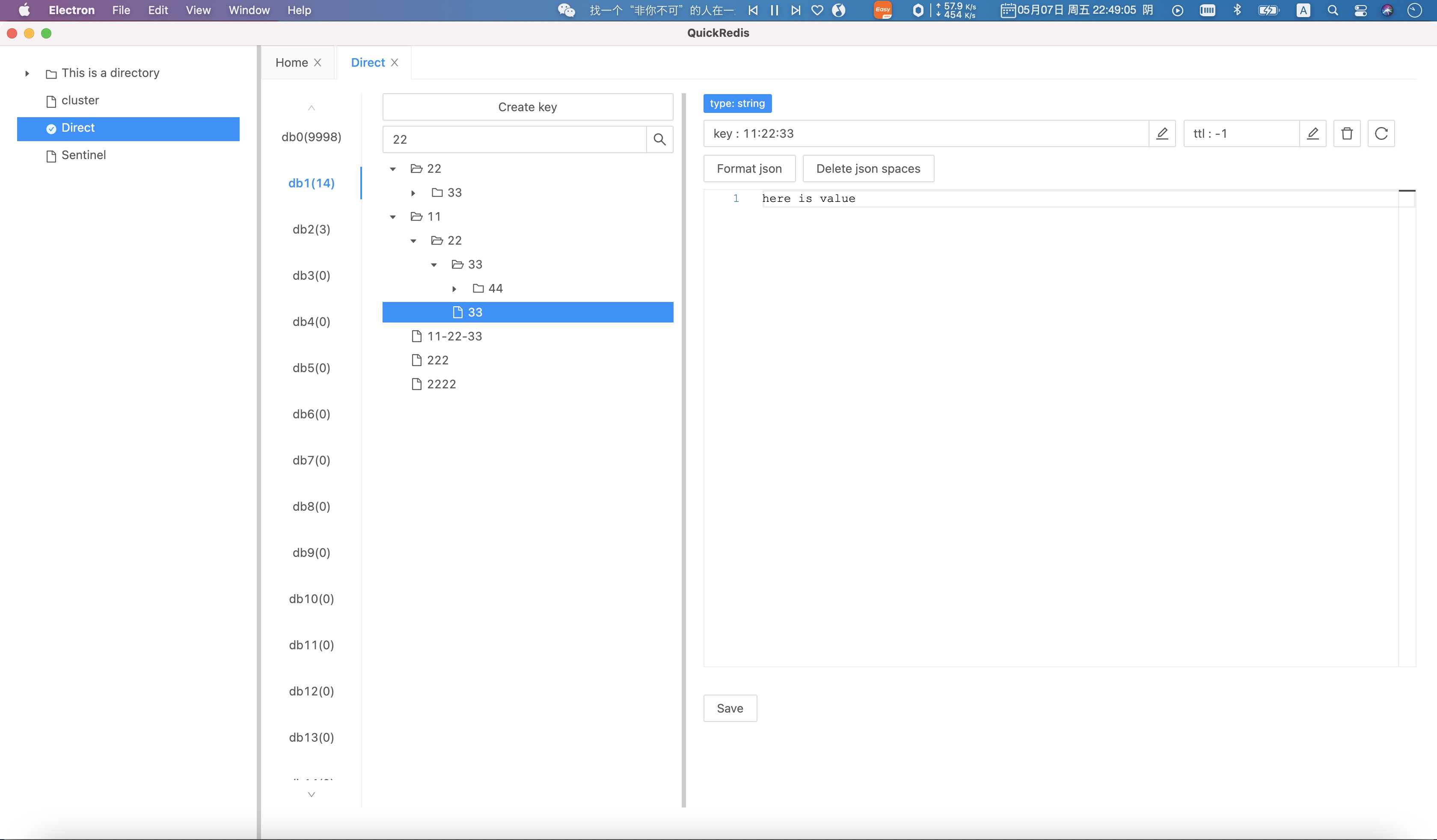
-é¦é¡µ
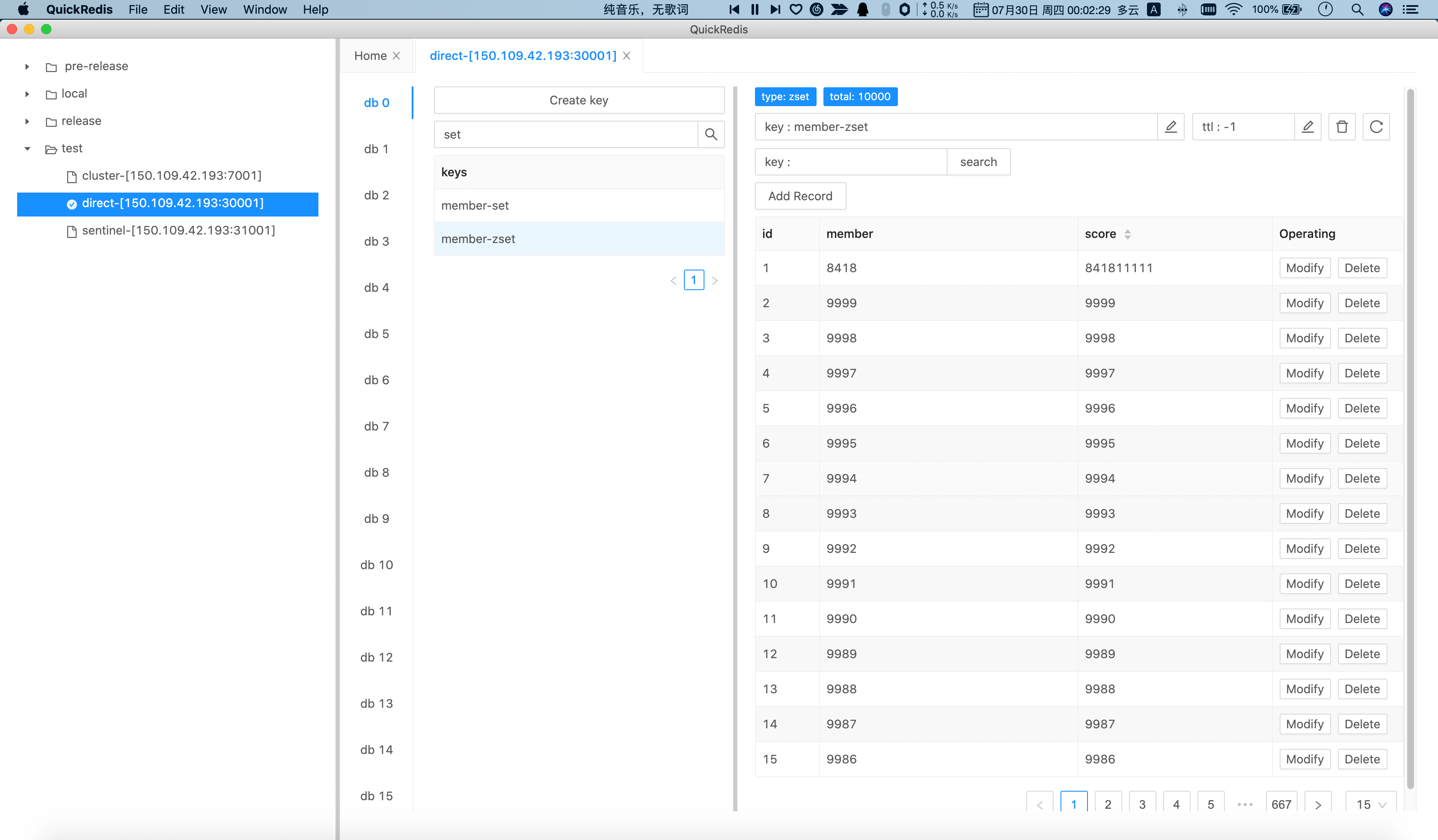
-è¿æ¥ç®¡çèåï¼æ¯æå¤ç®å½ç®¡çãæ¯æå¤å¶è¿æ¥ãæå¨è¿æ¥å°ç®å½ï¼
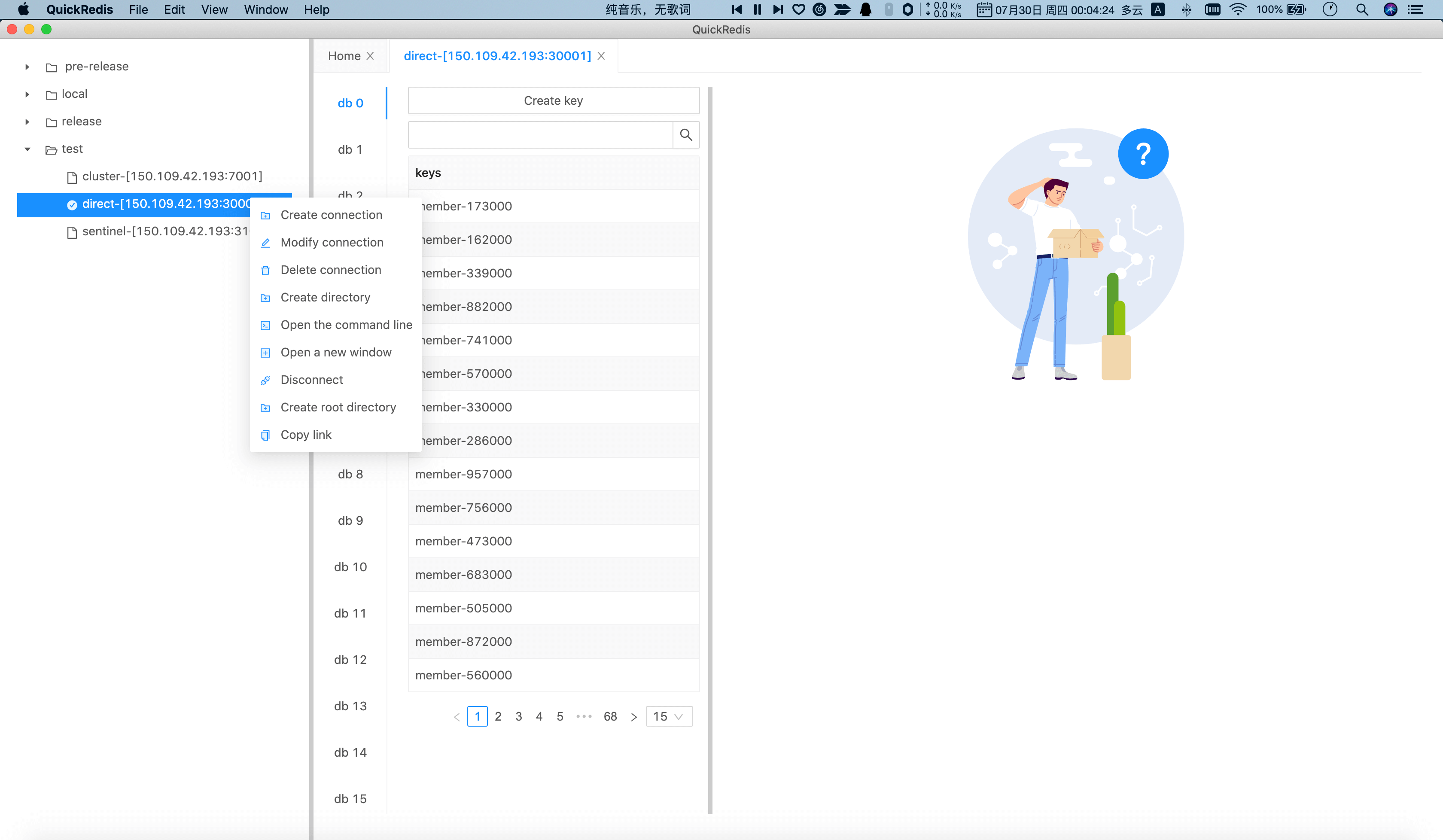
-å¤è¯è¨ï¼ç®ä½ä¸æãç¹ä½ä¸æãè±æãæ¥è¯ãæ³è¯ï¼
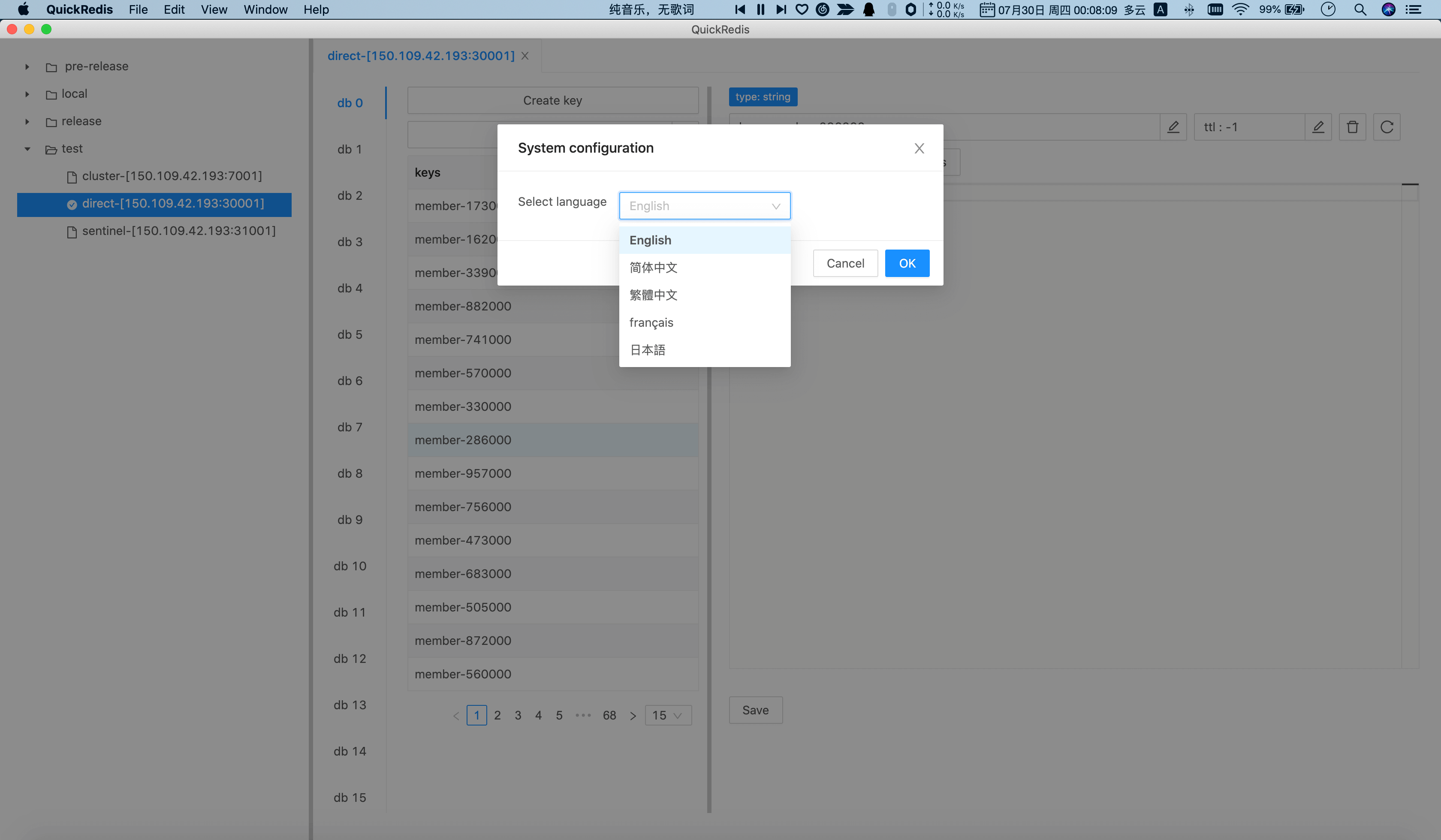
-å¿«éå
³éå¤ä¸ª TAB
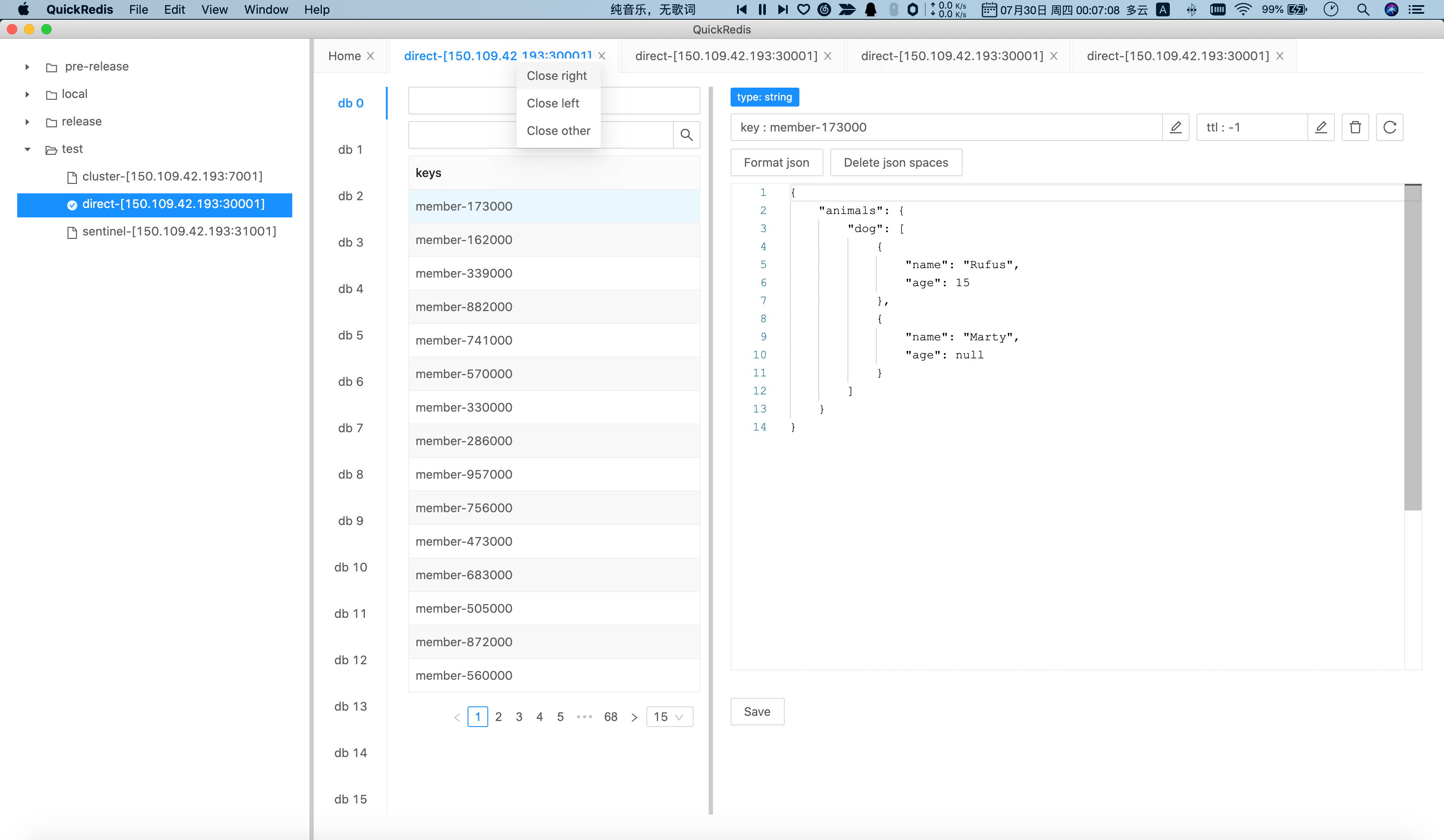
-ç´è¿æ¨¡å¼é
ç½®
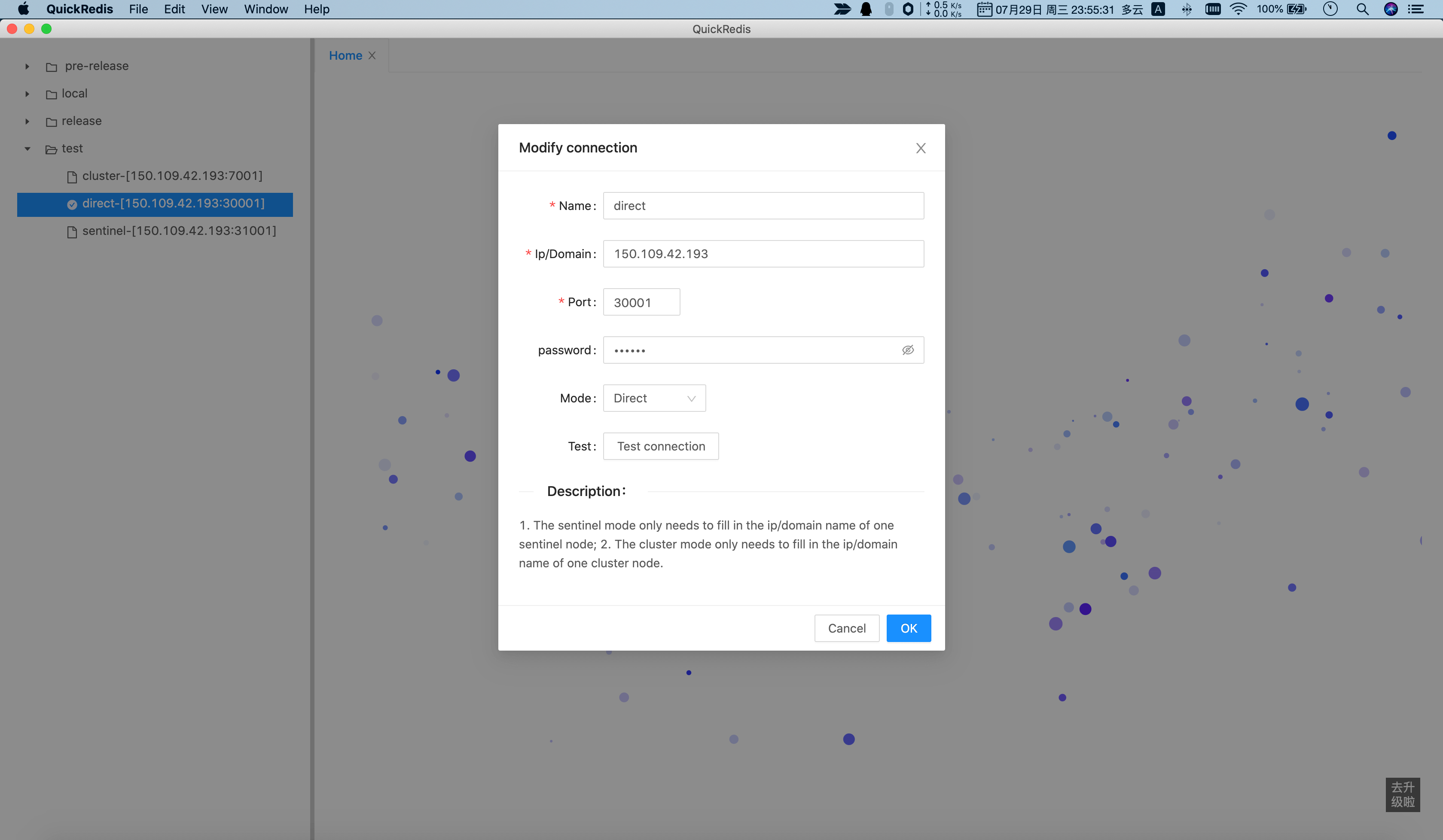
-å¨å
µæ¨¡å¼é
ç½®
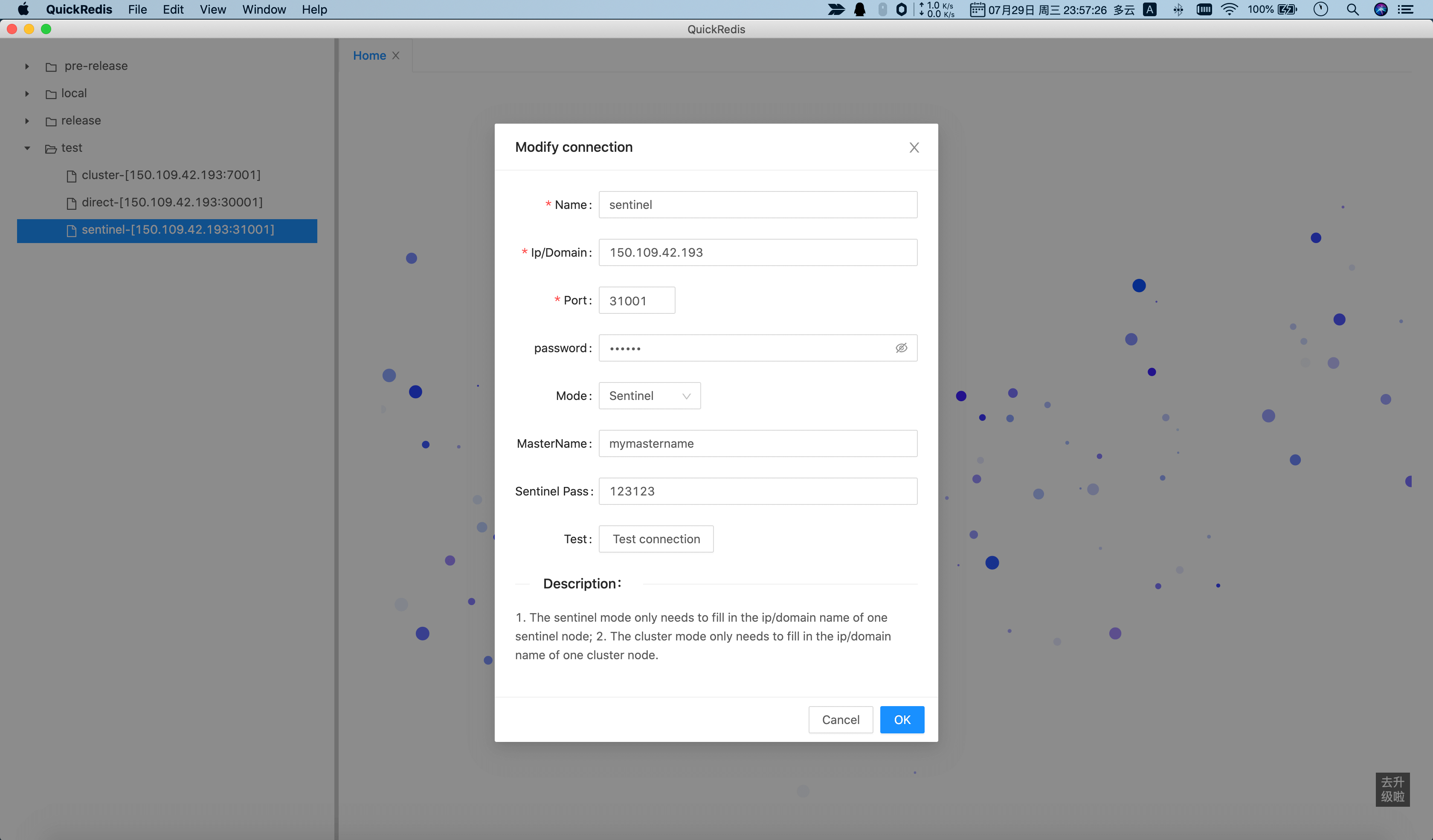
-é群模å¼é
ç½®
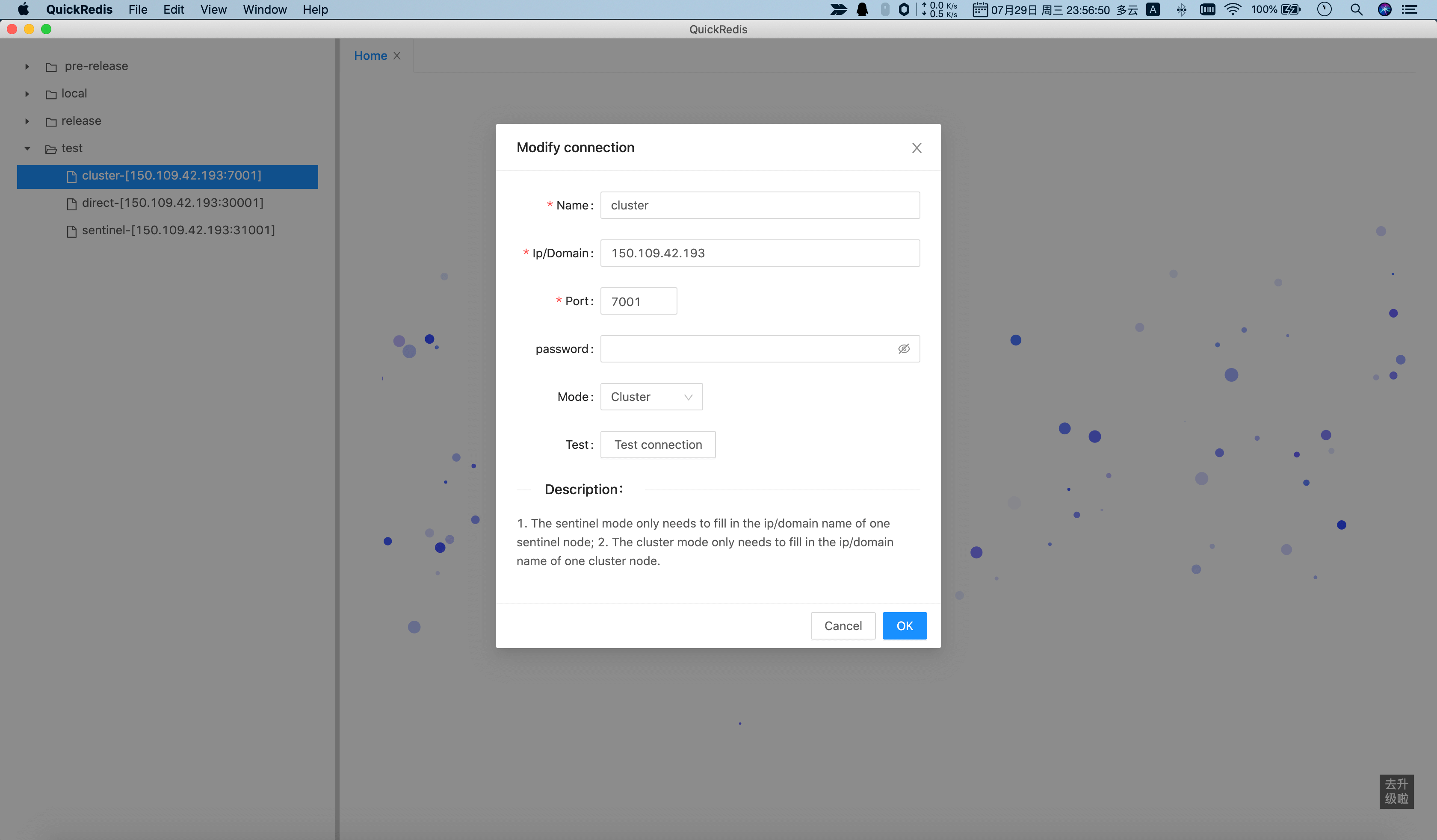
-å½ä»¤è¡
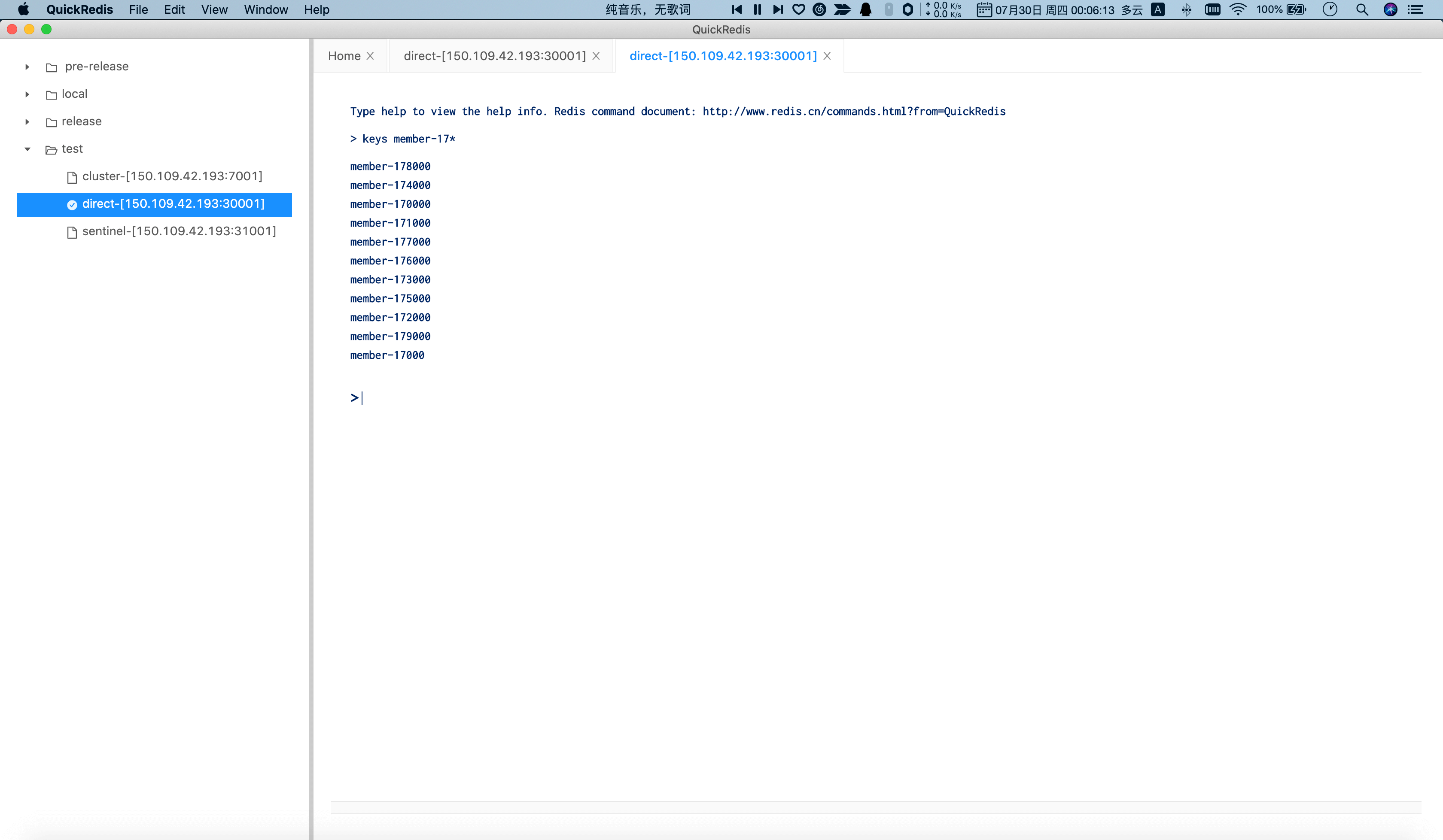
-string ç±»å管çï¼æ¯æå¼çjsonæ ¼å¼åãä¿®æ¹keyãä¿®æ¹ttlãå é¤keyï¼
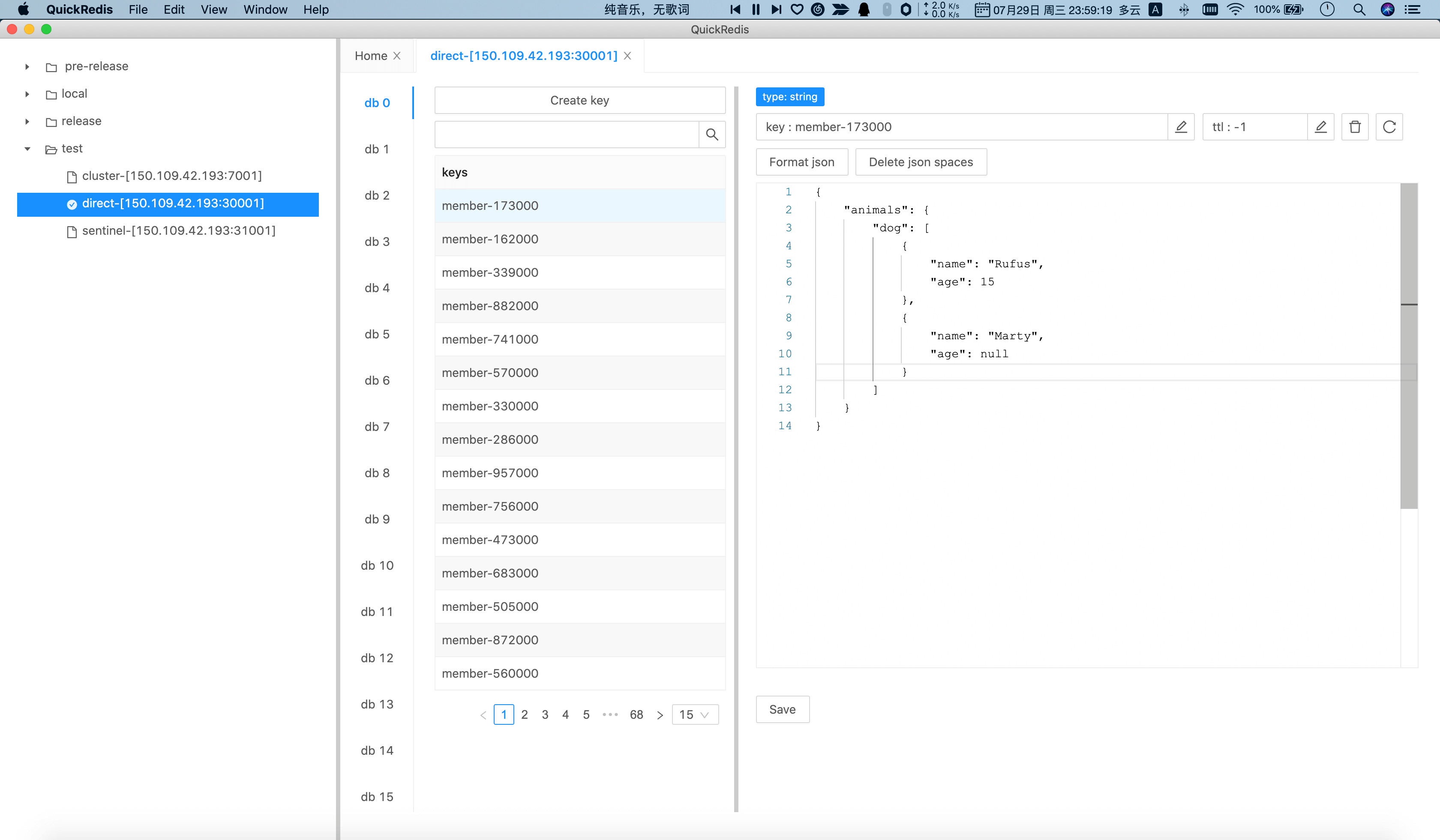
-list ç±»å管çï¼æ¯æ list å页æ¥è¯¢ãæ°å¢ãå é¤ï¼

-set ç±»å管çï¼æ¯æ set å页æ¥è¯¢ãæ°å¢ãå é¤ï¼
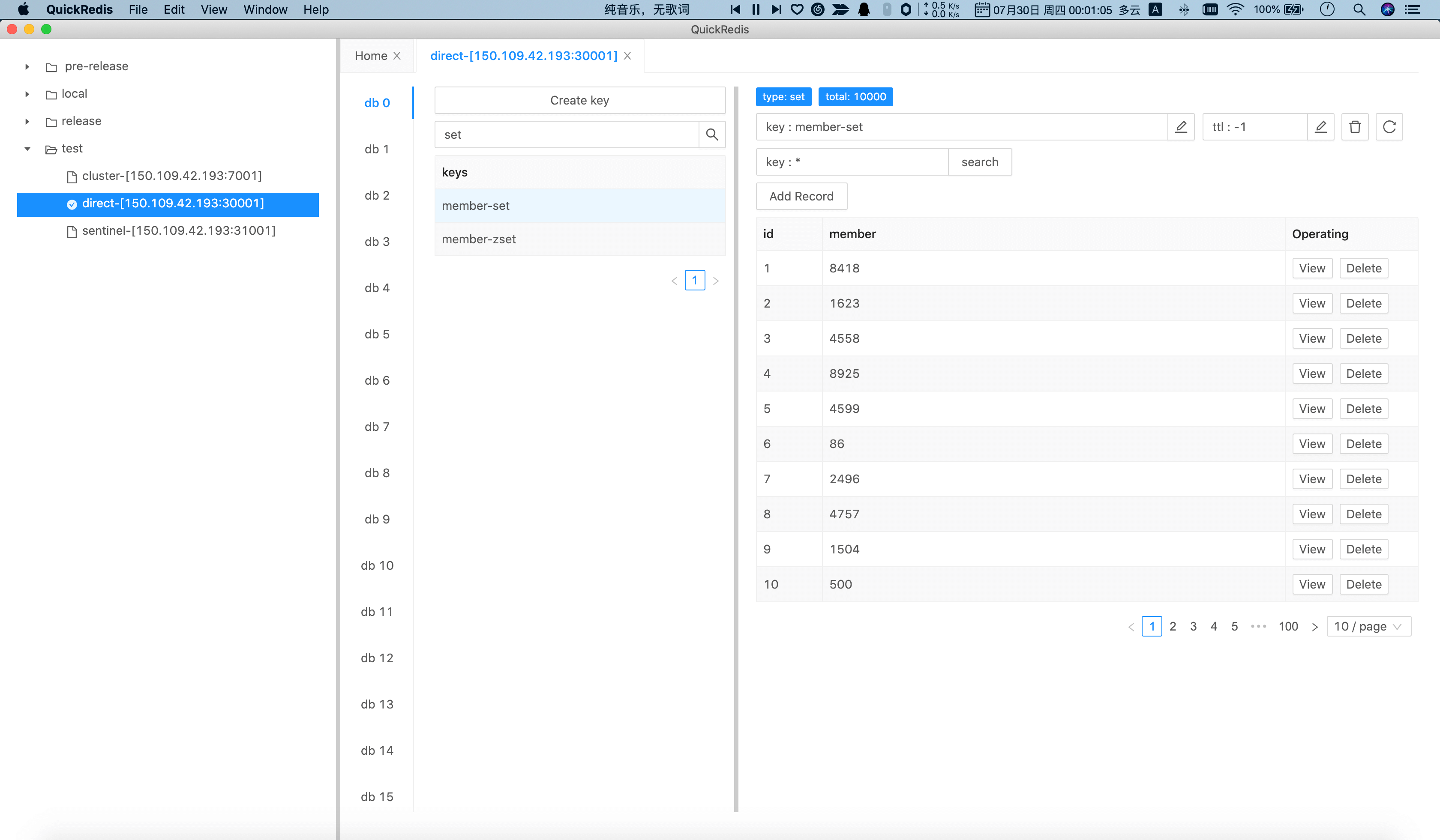
-hash ç±»å管çï¼æ¯æ hash å页æ¥è¯¢ãæ°å¢ãå é¤ãä¿®æ¹ï¼
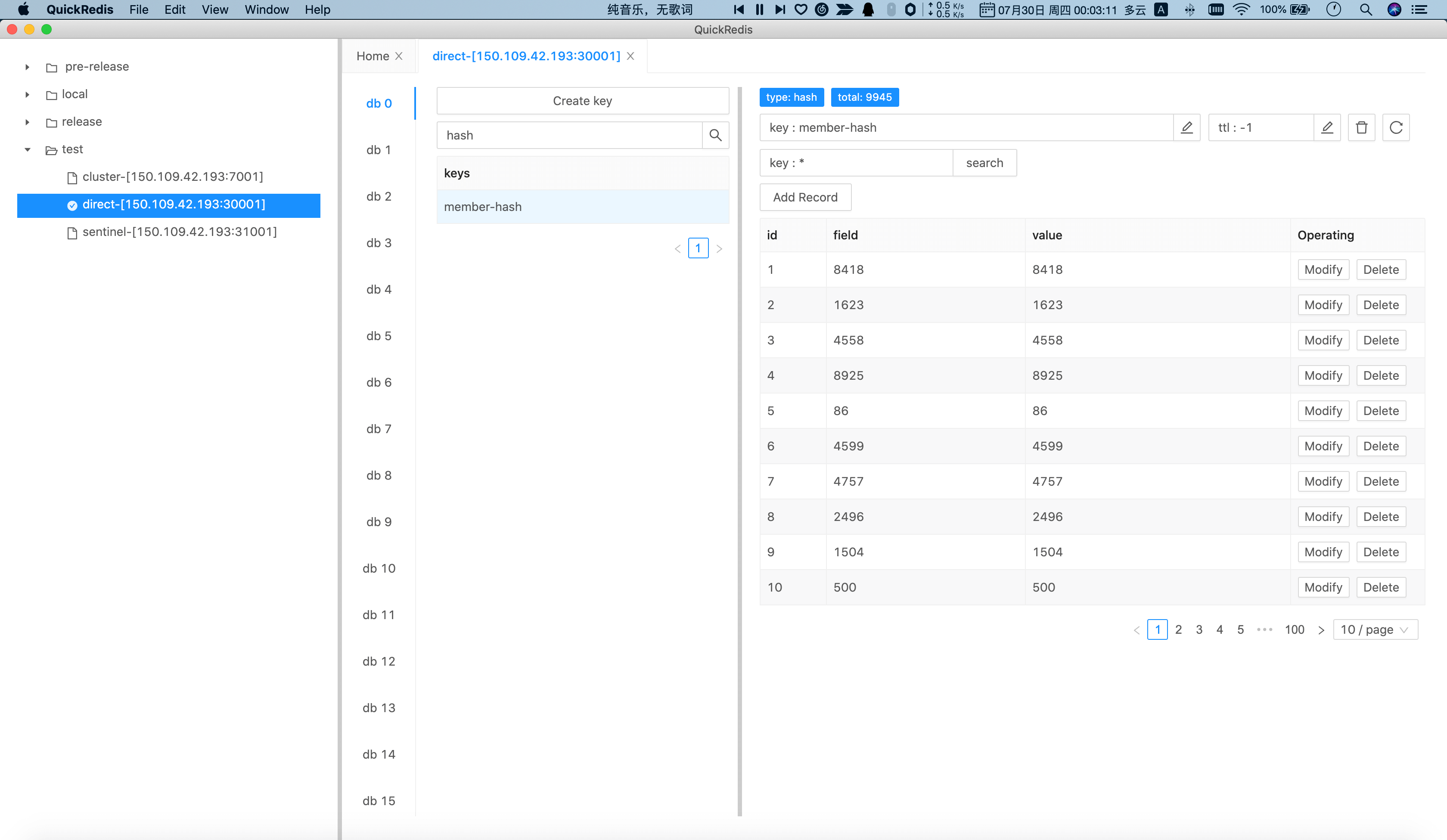
FAQ
å¦æä½ æä»»ä½ä½¿ç¨æ¹é¢çé®é¢ï¼è¯·éè¿ä¸é¢æ¹å¼çè¨ï¼
gitee å°å
https://gitee.com/quick123official/quick_redis_blog/issues
githubå°åï¼
https://github.com/quick123official/quick_redis_blog/issues
使ç¨å°çå¼æºä»£ç
ANTD ioredis react react-intl-universal redux less
å¿«éå¼å§
å¼åé¶æ®µï¼1. yarn run start1ï¼2. yarn run start2
æå ï¼1. yarn run build:macï¼2. yarn run pack:mac
Top Related Projects
Redisson - Valkey & Redis Java client. Real-Time Data Platform. Sync/Async/RxJava/Reactive API. Over 50 Valkey and Redis based Java objects and services: Set, Multimap, SortedSet, Map, List, Queue, Deque, Semaphore, Lock, AtomicLong, Map Reduce, Bloom filter, Spring, Tomcat, Scheduler, JCache API, Hibernate, RPC, local cache..
Advanced Java Redis client for thread-safe sync, async, and reactive usage. Supports Cluster, Sentinel, Pipelining, and codecs.
Redis Java client
.NET's leading C# Redis Client
Convert  designs to code with AI
designs to code with AI

Introducing Visual Copilot: A new AI model to turn Figma designs to high quality code using your components.
Try Visual Copilot